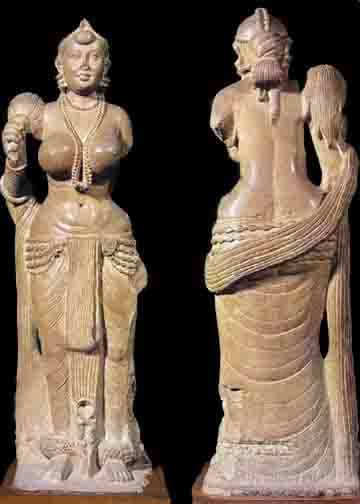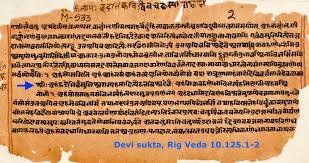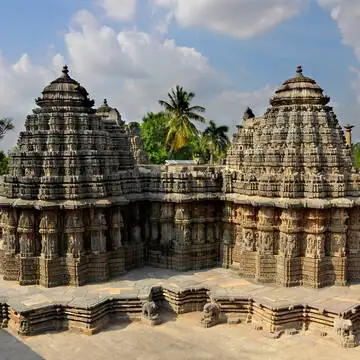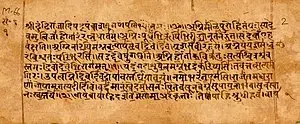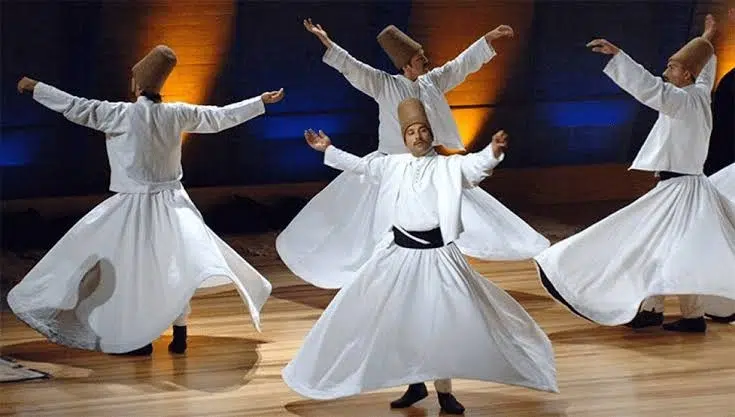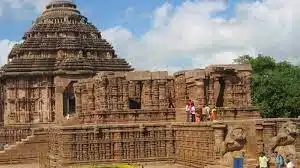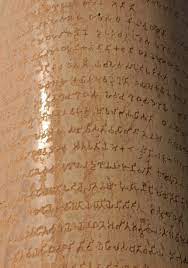List Of Ancient Scripts Of India
Script
Script means a writing system or orthography.
- The two ancient scripts in India: the Brahmi script and the Kharosthi script.
- Most of the ancient and modern scripts in India are developed from the Brahmi script, be it Devanagari, Tamil, Telugu, Kannada, Odia, Assamese/Bengali, etc.
- Hence, it can be said that Brahmi is the mother of scripts.
Indus Script

- Not yet deciphered.
- The Indus Script was generally written from right to left.
- But there are some exceptions where the writing is bidirectional, which means that the direction of the writing is in one direction on one line but in the opposite direction on the next line.
- The Indus Script combined both word signs and symbols with phonetic value. This type of writing system is known as “logo-syllabic”.
Brahmi Script
- Brahmi is the oldest writing system used in the Indian subcontinent.
- All surviving Indic Scripts in South East Asia are descendants of Brahmi.
- The best-known Brahmi inscriptions are the rock-cut edicts of Ashoka in North-Central India.
- The script was deciphered in 1837 by James Prinsep.
- Brahmi is usually written from left to right. Brahmi is an abugida.
- Abugida means that each unit is based on a consonant and the vowel notation is secondary, except when the vowels commence a word.
Kharosthi Script
- The Kharosthi Script (3rd century BC – 3rd century AD) is an ancient script used in ancient Gandhara (present Afghanistan and Pakistan) to write the Gandhari Prakrit and Sanskrit.
- It is a sister script of Brahmi and was deciphered by James Prinsep again.
- Kharosthi is also an abugida like Brahmi.
- Kharosthi includes a set of numerals that are similar to Roman numerals like I, X, etc.
- Kharosthi script is mostly written right to left but some inscriptions also show the left to right direction of Kharosthi.
Gupta Script
- It belongs to Gupta Empire and was used to write Sanskrit.
- Gupta Script descended from Brahmi and gave rise to the Nagari, Sarada, and SiddhamScripts.
- These scripts in turn gave rise to many of the most important scripts of India, including Devanagari, Gurmukhi Script (for Punjabi Language), Assamese Script, Bengali Script and Tibetan Script.
Vatteluttu Script
Developed from Tamil-Brahmi, to write the Tamil Script.
Kadamba Script
For writing Kannada, also a descendant of Brahmi script developed during the reign of Kadamb dynasty(4th-6th century AD)
Grantha Script
- The Grantha Script was widely used in Tamil Nadu and Kerala, to write Sanskrit and the classical language Manipravalam, and still is in restricted use in traditional Vedic schools.
- It is a Brahmic Script, having evolved from the Brahmi Script in Tamil Nadu.
- The Malayalam Script is a direct descendant of Grantha.
Sarada Script
- The Sarada or Sharada Script is an abugida writing system of the Brahmic family developed around the 8th century AD.
- It was used for writing Sanskrit and Kashmiri.
- Originally more widespread, its use became later restricted to Kashmir, and it is now rarely used except by the Kashmiri Pandit Community for ceremonial purposes.
Gurmukhi Script
- Gurmukhi is developed from the Sarada Script and was standardized during the 16th century AD by Guru Angad.
- The whole of the Guru Granth Sahib is written in this script, and it is the script most commonly used by Sikhs and Hindus for writing the Punjabi language.
Devanagari Script
- Devanagari is an abugida writing system of India and Nepal. It is written from left to right.
- The Devanagari Script is used for over 120 languages, including Hindi, Marathi, Nepali, Pali, Konkani, Bodo, Sindhi, and Maithili among other languages and dialects, making it one of the most used and adopted writing systems in the world.
- The Devanagari Script is also used for classical Sanskrit texts.
Modi Script
- Modi is a script used to write the Marathi language.
- Modi was the official script used to write Marathi until the 20th century when the Balbodh style of the Devanagari Script was promoted as the standard writing system for Marathi.
- Modi script was also used for Urdu, Kannada, Gujarati, Hindi, and Tamil. Modi script is also an abugida.
Thanks for Reading.
Also refer :

